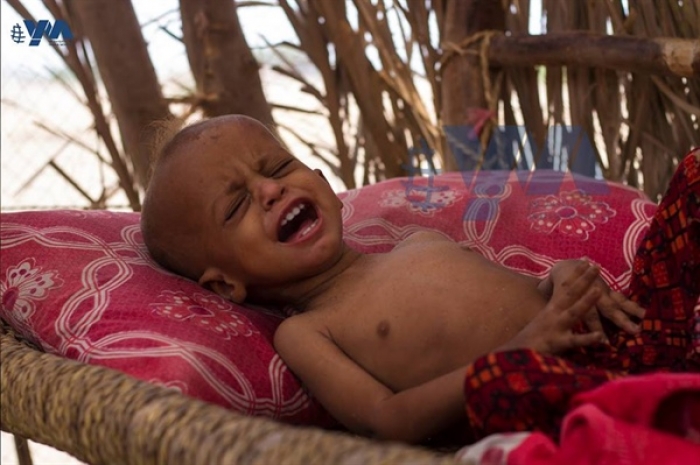UNICEF: 77 Million Children in the Middle East and North Africa Suffer the Malnutrition

Yemen Monitor/Newsroom
At least 77 million children, or 1 in 3, in the Middle East and North Africa are suffering from some form of malnutrition, according to a report released by the United Nations Children’s Fund (UNICEF).
The report found that “55 million children in the region are overweight or obese, with these forms of malnutrition increasing among school-age children in all countries in the region.”
It indicated that “another 24 million children suffer from undernutrition, including stunting, wasting, and underweight.”
Despite progress made over the past 20 years in reducing the prevalence of stunting at the regional level, the problem remains widespread, affecting 10 million children under the age of 5 in the region, according to UNICEF.
UNICEF Regional Director for the Middle East and North Africa, Adele Khadr, said, “The Middle East and North Africa region is facing an increasingly complex triple burden of malnutrition that is undermining the growth, development, and future potential of its children.”
She added that “only one-third of young children are getting the nutritious foods they need to grow, develop, and thrive.”
She continued, “This is a shocking statistic in 2024 and risks getting worse as conflicts, crises, and other challenges continue in our region.”
UNICEF explained that “the malnutrition crisis in the region is exacerbated by what children eat and how they are fed, as well as limited access to nutritious foods, clean water, medical care, and other basic services, and the proliferation of cheap, unhealthy foods high in salt, sugar, and fat.”
This crisis, according to the organization, occurs “against a complex backdrop of ongoing conflicts, political instability, climate shocks, and rising food prices, which collectively deprive children of their right to nutritious food and limit humanitarian access to vulnerable communities.”
From the conflict-induced hunger and wasting of children in Sudan and Yemen, to the double burden of stunted growth and overweight in Egypt or Libya, each unique context requires a tailored response that focuses on the specific forms of malnutrition in that context and the underlying causes, according to UNICEF.
Many of the same challenges affect women of childbearing age, as 9 million women, or 5% of women in the Middle East and North Africa, are underweight, and 114 million women, or 68%, are overweight or obese. In 17 countries in the region, the prevalence of overweight and obesity among adult women exceeds 60%, which is much higher than the global average of 45%, according to UNICEF.
UNICEF called on governments to “prioritize nutrition in their national development plans, policies, and budgets.”
It affirmed that it will continue to support countries as they collect critical nutrition data for mothers and children to strengthen action and program implementation.
The UN agency emphasized the need to intensify efforts to prevent and treat all forms of malnutrition and ensure every child’s right to food and nutritious diets.
Source: news.un




